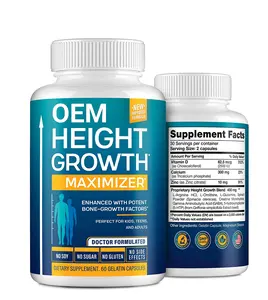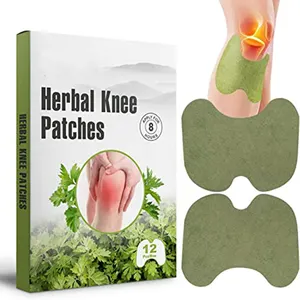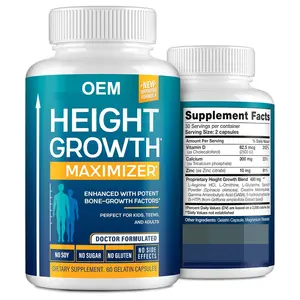Phổ biến trong ngành của bạn

PO-TRY máy in dtf máy in dtf với Máy LắC bột và lò nướng chữ số t Áo sơ mi A3 dtf máy in i3200 máy in
15,40 US$ - 4.582,10 US$
Đơn hàng tối thiểu: 1 Bộ


Nguồn Nhà Sản Xuất A3 30Cm Xp600 Đầu Kép Dtf Máy In Truyền Nhiệt Cuộn T-Shirt Dệt Máy In Với Bột Shaker
240,00 US$ - 2.450,00 US$
Đơn hàng tối thiểu: 1 Bộ


Máy in thăng hoa 1,3m / 1,6m / 1,8m / 1,9m 2,2 / 2,5 / 3,2m Máy in thăng hoa dung môi sinh thái
9,00 US$ - 5.499,00 US$
Đơn hàng tối thiểu: 1 Bộ
Vận chuyển mỗi chiếc: 629,42 US$


Độ nét cao nhiệt tij máy in phun Thời hạn sử dụng máy in hàng loạt mã hóa Máy in phun
Sẵn sàng vận chuyển
290,00 US$ - 380,00 US$
Đơn hàng tối thiểu: 1 Bộ
Vận chuyển mỗi chiếc: 0,00 US$


Potry 30cm xp600 3 đầu in 2 trong 1 với Laminator tự động tinh thể Sticker UV dtf máy in
55,00 US$ - 3.737,95 US$
Đơn hàng tối thiểu: 1 Cái


Procolored 33 cm L1800 CuộN thức ăn dtf máy in phun
Sẵn sàng vận chuyển
2.899,00 US$ - 3.504,00 US$
Đơn hàng tối thiểu: 1 Bộ
Vận chuyển mỗi chiếc: 0,00 US$

Letop quảng cáo thiết bị phun 1.6m 1.9m CuộN máy in cho định dạng rộng kép i3200 đầu in cuộn để cuộn máy in UV
5.775,00 US$ - 5.863,00 US$
Đơn hàng tối thiểu: 1 Bộ

Domsem A3 CuộN để cuộn máy in phun máy in nhãn cuộn nhãn dán máy in UV màu máy in nhãn với 3 cái đầu
Sẵn sàng vận chuyển
110,00 US$ - 4.150,00 US$
Đơn hàng tối thiểu: 1 Bộ
Vận chuyển mỗi chiếc: 950,00 US$

6 Feet CuộN Để Cuộn Máy In Phun Dtg Máy In Uv Cho Mềm Filem, PP, Vải
9.000,00 US$ - 9.500,00 US$
Đơn hàng tối thiểu: 1 Đơn vị

Máy In Phun Máy In Kỹ Thuật Số 3.2M Blueprint CuộN Máy In UV 1024i Uv
24.500,00 US$ - 25.500,00 US$
Đơn hàng tối thiểu: 1 Bộ

Fastjet Rộng Lớn Định Dạng Công Nghiệp Tiên Tiến Tự Động Kỹ Thuật Số Trực Tuyến Liên Tục Cuộn Màu Thăng Hoa Uv Máy In Phun
5.800,00 US$ - 8.250,00 US$
Đơn hàng tối thiểu: 1 Bộ
Vận chuyển mỗi chiếc: 300.000,00 US$

Đầu In Dx5 4 Màu Kỹ Thuật Số Máy In Phun Biển Quảng Cáo Máy In Dung Môi Sinh Thái Grando Đầu I3200 Với Hệ Thống Cấp Liệu Tự Động
1.800,00 US$
Đơn hàng tối thiểu: 1 Bộ
Các danh mục hàng đầu
Giới thiệu về cuộn thức ăn máy in phun
Ngày nay, cuộn thức ăn máy in phun không còn là điều mới mẻ đối với những người bình thường và không còn bị coi là điều cấm kỵ khi sử dụng. Nếu bạn đang tìm kiếm niềm vui áp chót đó, bạn phải kiểm tra sự bao la. Bộ sưu tập cuộn thức ăn máy in phun tại Alibaba.com. Những gợi cảm và cong. cuộn thức ăn máy in phun đáng giá từng xu và chắc chắn làm cho đêm đó trở nên đặc biệt đối với bạn. Những con búp bê này có ngoại hình giống như thật, bắt đầu từ tóc đến ngón chân theo mọi nghĩa.
Cho dù bạn là một người cô đơn đang tìm kiếm một người bạn đời như cuộc sống hay một cặp vợ chồng muốn thêm gia vị cho cuộc sống của họ, bạn đều có thể sử dụng chúng . cuộn thức ăn máy in phun để đốt cháy ngọn lửa đó. Những ngoạn mục. cuộn thức ăn máy in phun có thể tùy chỉnh theo mong đợi của bạn. Những điều tuyệt vời. cuộn thức ăn máy in phun có sẵn ở cả phiên bản dành cho nam và nữ và được làm từ silicone cấp y tế để sử dụng an toàn. Hãy sở hữu ngay bây giờ và tận hưởng một đêm đam mê và cháy bỏng.
Alibaba.com cung cấp những điều tuyệt vời này. cuộn thức ăn máy in phun ở mọi hình dạng cơ thể, kích thước và sắc tộc. Dù yêu cầu của bạn đối với. cuộn thức ăn máy in phun, bạn có thể tải tất cả chúng trên trang web. Những cái này. cuộn thức ăn máy in phun được tạo hình bởi những người thợ thủ công giỏi nhất và mọi chi tiết phức tạp đều được kiểm tra kỹ lưỡng. Những con búp bê này có mắt, tóc, móng tay và tất cả các bộ phận cơ thể khác tương tự như người thật.
Alibaba.com cung cấp nhiều loại. cuộn thức ăn máy in phun có thể giúp bạn mua các sản phẩm phù hợp với ngân sách và các yêu cầu khác của bạn. Các sản phẩm này an toàn để sử dụng, được chứng nhận và thân thiện với môi trường trong tự nhiên. Đơn đặt hàng OEM có sẵn trên các sản phẩm này.
Cho dù bạn là một người cô đơn đang tìm kiếm một người bạn đời như cuộc sống hay một cặp vợ chồng muốn thêm gia vị cho cuộc sống của họ, bạn đều có thể sử dụng chúng . cuộn thức ăn máy in phun để đốt cháy ngọn lửa đó. Những ngoạn mục. cuộn thức ăn máy in phun có thể tùy chỉnh theo mong đợi của bạn. Những điều tuyệt vời. cuộn thức ăn máy in phun có sẵn ở cả phiên bản dành cho nam và nữ và được làm từ silicone cấp y tế để sử dụng an toàn. Hãy sở hữu ngay bây giờ và tận hưởng một đêm đam mê và cháy bỏng.
Alibaba.com cung cấp những điều tuyệt vời này. cuộn thức ăn máy in phun ở mọi hình dạng cơ thể, kích thước và sắc tộc. Dù yêu cầu của bạn đối với. cuộn thức ăn máy in phun, bạn có thể tải tất cả chúng trên trang web. Những cái này. cuộn thức ăn máy in phun được tạo hình bởi những người thợ thủ công giỏi nhất và mọi chi tiết phức tạp đều được kiểm tra kỹ lưỡng. Những con búp bê này có mắt, tóc, móng tay và tất cả các bộ phận cơ thể khác tương tự như người thật.
Alibaba.com cung cấp nhiều loại. cuộn thức ăn máy in phun có thể giúp bạn mua các sản phẩm phù hợp với ngân sách và các yêu cầu khác của bạn. Các sản phẩm này an toàn để sử dụng, được chứng nhận và thân thiện với môi trường trong tự nhiên. Đơn đặt hàng OEM có sẵn trên các sản phẩm này.











